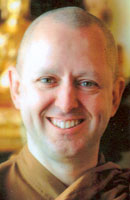Kurunegala “Daily News” Corr.
All human beings face and share the same fate. Due to ignorance of the true nature of life, we often weep and wail and sometimes even smile and weep again. When once we realise the true nature of life, we can face the impermanence of all component things and seek liberation.
“Life is uncertain, death is certain”
- The Buddha
- The Buddha
Everyday we hear of deaths all over the world. Many deaths are caused due to various reasons such as natural disasters, accidents, diseases, war and violence. Are we ready to face death fearlessly?
Once life is launched, like a bullet it must reach its destination which is death.
All of us have to face this inevitable, natural phenomenon whether we like it or not. The sooner this truth is accepted, the better we will be able to direct our lives for a good purpose. Actually, we are disturbed not so much by death itself, but by the wrong view we hold of it. Death in itself is not that terrible; what is terrible is the fear of death that prevails in the mind.
Biological clocks
Our lifespan is controlled by our biological clocks which are continuously ticking away. When they run out, sooner or later, there is little we can do to gain extra time.
Once our time is up, we must be prepared to go through the natural process of death. All human beings, irrespective of sex, or race, creed, will have to come to terms with death. There is no alternative escape. Death is an inevitable process of this world.
It is not often that we are brave enough to come face to face with the thought of our own mortality. Yet, man is not free in life unless he is also free from the fear of death.
Attachment
It is hard to bear the loss of people whom we love because of our attachment to them.
This happened to Visakha, a well-known lady devotee during the time of the Buddha. When she lost her beloved granddaughter, she visited the Fully-Awakened One to seek advice in her great sorrow. “Visakha, would you like to have as many sons, daughters grandsons and granddaughters as there are children in this town?” asked the Buddha.
“Yes, Sir, I would indeed!”
“But how many children die daily in this town?” The Buddha questioned “Several, Sir. The town is never free from children dying, Sir,” Visakha replied.
“Then, Visakha, in such a case, would you cry for all of them? Visakha, those who have a hundred things beloved, they have a hundred sorrows. He who has nothing beloved, has no sorrow.
Such persons are free from sorrow.” The Buddha mercifully enlightened Visakha over the death of human beings.
When we develop attachment, we also must be prepared to pay the price of sorrow when separation takes place.
The love of life can sometimes develop a morbid fear of death. We will not take any risks even for a rightful cause. We live in fear that illness or accident will put an end to our seemingly precious permanent worldly life.
Realizing that death is a certainty, we hope and pray for a survival of the soul in heaven for our own security and preservation. Such beliefs are based on strong craving for continued existence.
Mental stress
According to psychological studies, much mental stress is caused by our refusal to face facts and accept life’s realities. This stress, if not overcome can eventually lead to grave physical illness. Certainly, worry and despair over illness will make it worse.
We cannot pick and choose the kind of illness we desire, nor can we choose the suitable or auspicious time to die. But we can certainly choose to face illness and death without fear.
People are frightened of dead bodies, but in the true sense, the living are in fact far more dangerous and brutal than dead bodies.
Dead bodies do not harm us, but the living are capable of doing enormous harm and could even resort to murder. So, is it not a stupid belief, for people to be afraid or frightened of dead bodies?
Each and every individual should be aware of the role of death in his or her destiny.
Whether royalty or commoner, rich or poor, strong or weak, a man’s final resting place within this life is either in a coffin lying buried six feet underground or in an urn or strewn over the sea.
Fate
All human beings face and share the same fate. Due to ignorance of the true nature of life, we often weep and wail and sometimes even smile and weep again. When once we realise the true nature of life, we can face the impermanence of all component things and seek liberation.
Until and unless we achieve our liberation from worldly conditions, we will have to face death over and over again. And in this respect, too, the role of death is very clear. If a person finds death to be unbearable, then he should make every effort to overcome this cycle of birth and death.
May you have wisdom to realise the Four Noble Truths. May you be well and happy.


